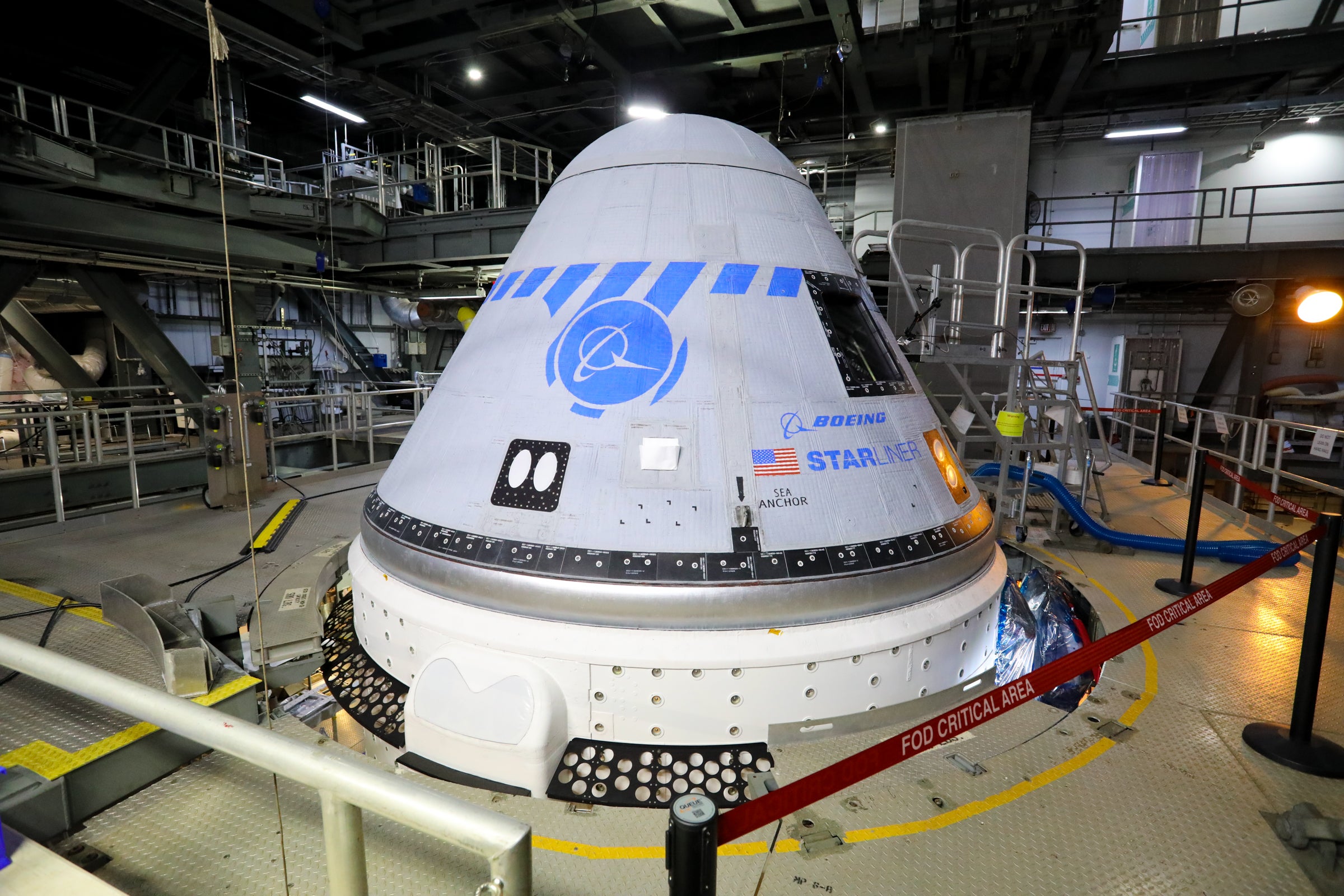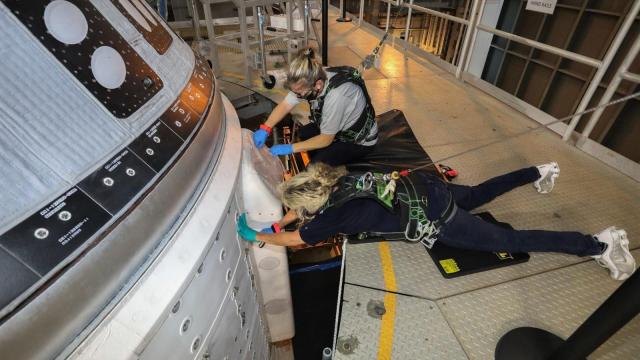New details are emerging about a technical problem that prevented NASA and Boeing from conducting a test launch of a CST-100 Starliner spacecraft last week. The problem appears to be more severe than previously believed, casting doubt on plans to launch the spacecraft later this month.
Like a car in the garage for repairs, Boeing’s Starliner is back in the hangar as engineering teams scramble to fix a problem related to the spacecraft’s propulsion system.
Specialists are working to “restore functionality” to 13 valves in the spacecraft’s propulsion system, as NASA explained in a recent statement. These valves, as NASA says, “connect to thrusters that enable abort and in-orbit manoeuvring,” and they failed to open during the countdown on August 3, resulting in the scrub. The Boeing Orbital Flight Test-2 mission to the International Space Station is now on an indefinite delay.
Keith Cowing, a former NASA employee and editor of the site NASA Watch, made his opinion known yesterday in a painfully brief post:
How — why — did this spacecraft — one that is supposed to eventually fly humans — ever make it to the launch pad without fully operational propulsion valves in the first place? Just wondering.
Fair question. The Starliner story is getting sadder by the minute. The first uncrewed test flight of Starliner in late 2019 ended in disappointment, as the spacecraft failed to reach the International Space Station. The botched test resulted in a slew of corrections and a 1.5-year delay in the project, which, as part of NASA’s Commercial Crew Program, seeks to provide a platform for transporting astronauts to the ISS. Aside from Russian craft, the only other available option for NASA is to launch astronauts aboard the SpaceX Crew Dragon, which got off the ground in May 2020.

The second uncrewed test of Starliner was supposed to happen on July 30, but the misfiring Russian Nauka module caused the ISS to perform an unscheduled backflip, resulting in the delay.
Following the scrubbed launch on August 3, the Starliner capsule — still atop a United Launch Alliance Atlas V rocket — was moved to the Vertical Integration Facility (VIF) for closer inspection. Located next to Cape Canaveral Space Force Station in Florida, this hangar gives engineering teams the ability to inspect the spacecraft up close. The capsule is currently powered and capable of receiving commands, according to NASA.
Boeing initially described the problem as having to do with “unexpected valve position indications.” The company ruled out software problems, but speculation emerged that an electrical storm, which passed through Space Launch Complex-41 the day before, might have damaged the valves. In a statement, Boeing said this is an “unlikely cause,” but the team will “closely inspect for water or electrical damage” while the spacecraft is in the hangar. In addition to physically inspecting Starliner, engineering teams have chemically sampled the valves’ exterior, and they’ve ruled out external corrosion.
Since entering the VIF, engineers have commanded seven of the 13 valves that were previously stuck in the closed position. As for the remaining six valves, they’re still stuck, despite many measures to get them unstuck.
“Test teams are applying mechanical, electrical and thermal techniques to prompt the valves to open, and are moving forward with a systematic plan to open the remainder of the affected valves, demonstrate repeatable system performance, and verify the root cause of the issue before returning Starliner to the launch pad for its Orbital Flight Test-2 mission,” as NASA writes.
That’s a daunting checklist, especially given that the root cause of the problem is still a complete mystery. Despite this, Boeing is “assessing multiple launch opportunities for Starliner in August and will work with NASA and United Launch Alliance to confirm those dates when the spacecraft is ready,” as the company declared in a statement put out yesterday.
I’m not holding my breath. This problem seems serious, not something that can casually be swept aside, regardless of the cause. But you wouldn’t know it from Boeing.
“Cautiously optimistic is a good way to describe how the team is feeling,” John Vollmer, Starliner vice president and program manager, said in a statement put out late last week. “They’re coming forward with innovative ideas and prioritising the safety of the spacecraft and their teammates.”
So the saga continues with Starliner. Thankfully, NASA astronauts can hitch a ride to space on SpaceX’s Crew Dragon, so time isn’t necessarily of the essence. But this is starting to get discouraging, if not very worrisome.
